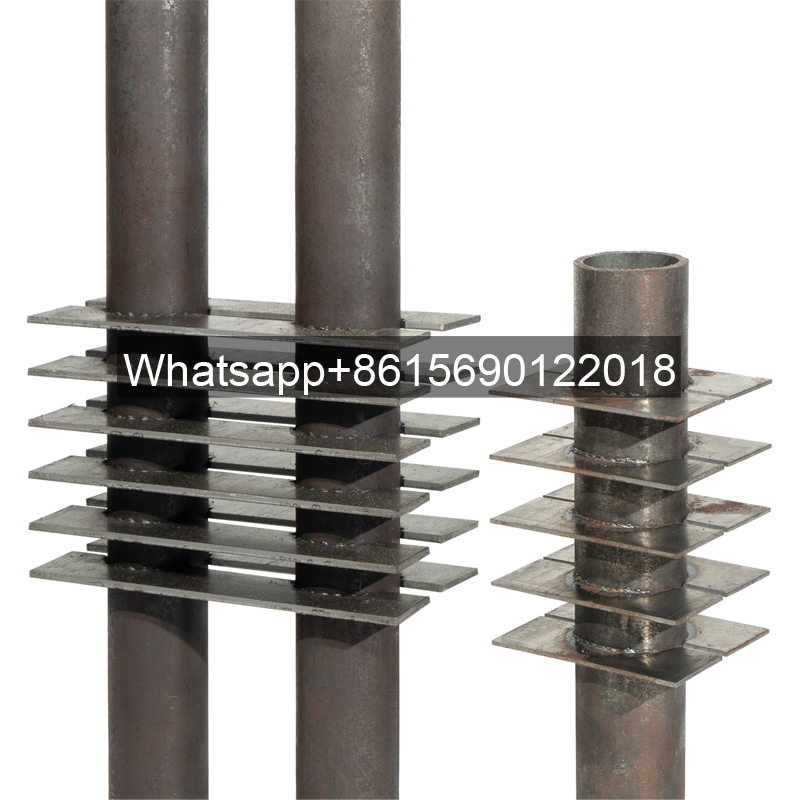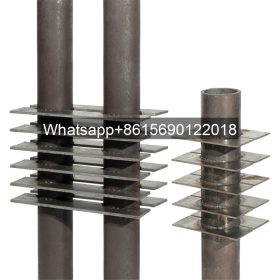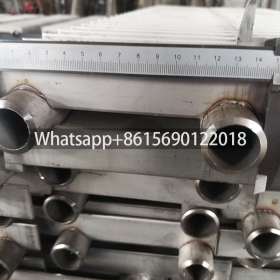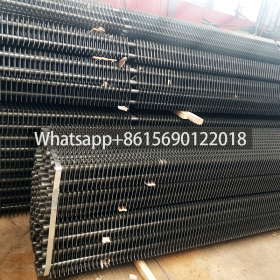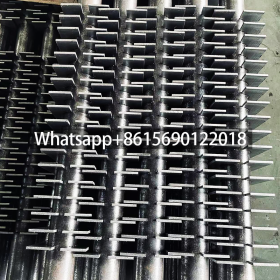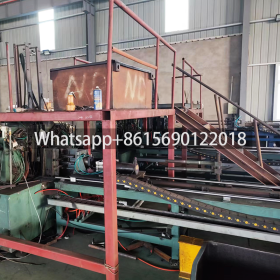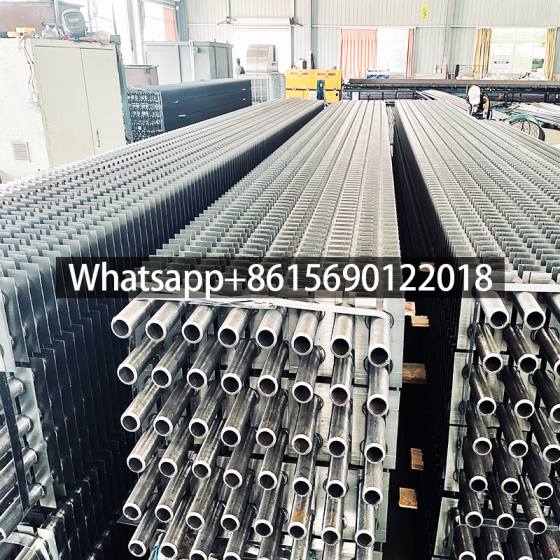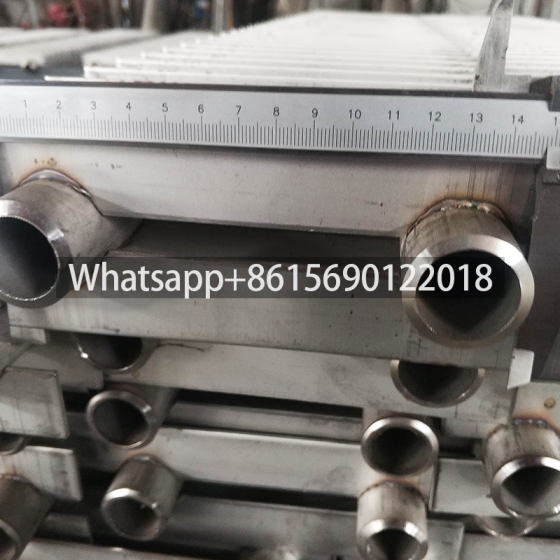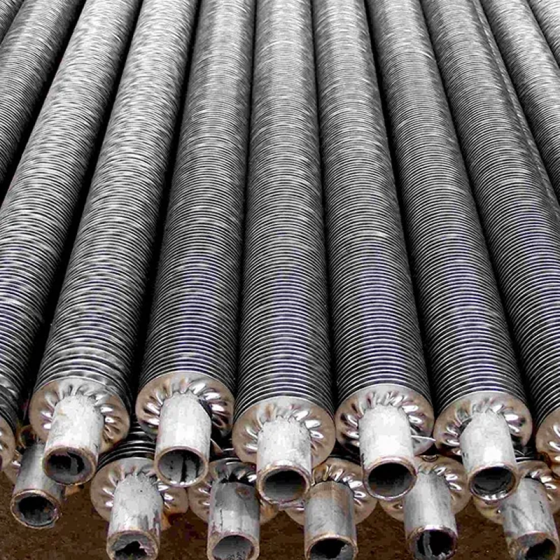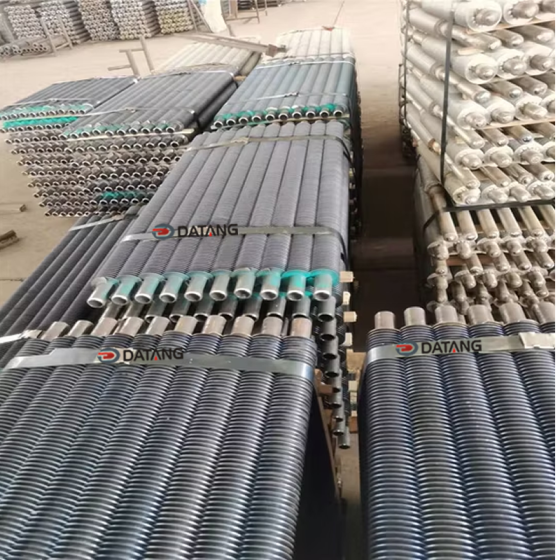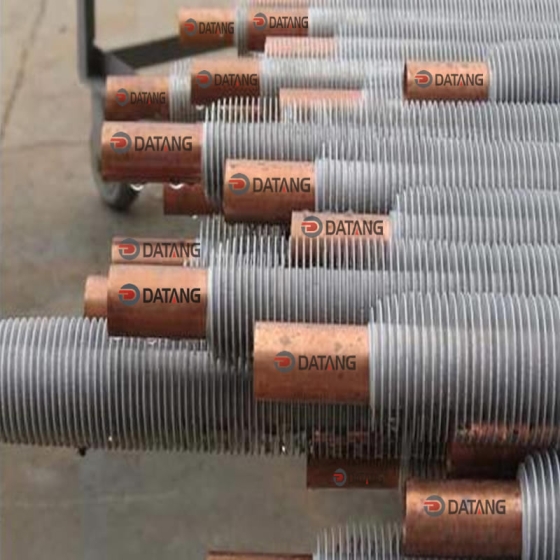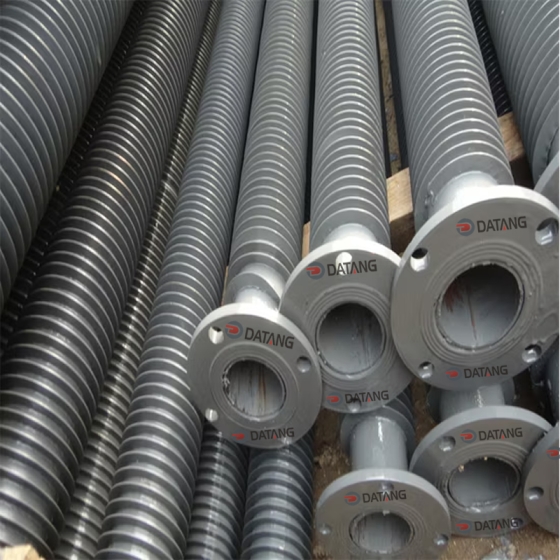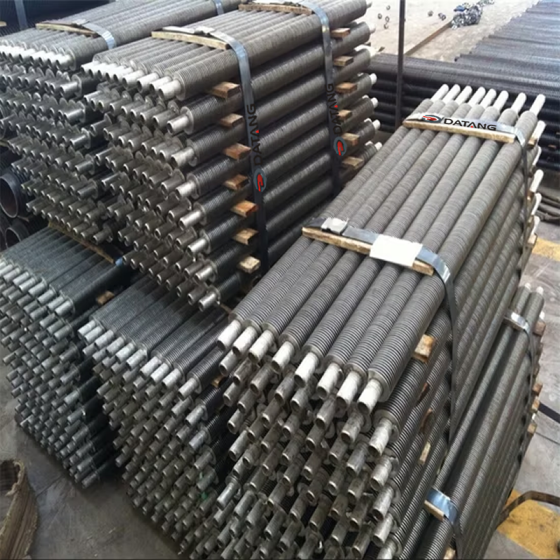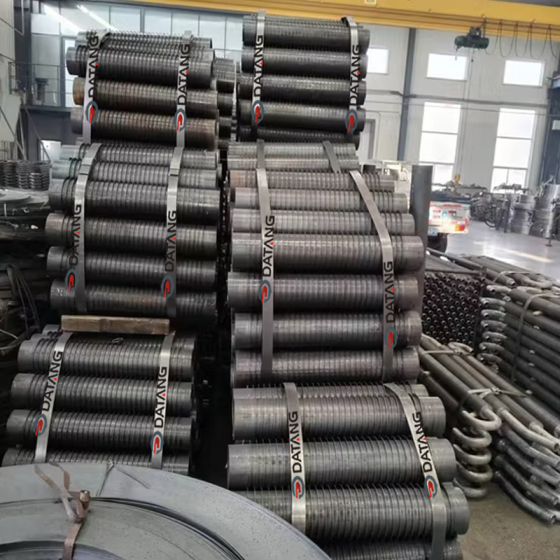Here is the professional of the provided content regarding H-shaped squared welded fin tubes:
H-type square welded finned tube is a high-efficiency heat exchange element with an “H”-shaped (single tube) or “double H”-shaped (double tube) cross section. It is made by symmetrically welding two rectangular steel sheets on both sides of the smooth tube and belongs to the extended heating surface structure.
⚙️ I. Structural Features & Technical Principles
- Geometric Characteristics
Fins are approximately square steel plates, with side lengths roughly twice the tube diameter, featuring a central gap to form a “flue gas channel.” Dual-tube configurations (HH-type) share a set of fins, enhancing structural rigidity. - Welding Process
Utilizes flash resistance welding technology, achieving >95% weld fusion rate, high tensile strength, and excellent thermal conductivity. - Arrangement Pattern
Tube bundles arranged in in-line layout, ensuring uniform gas flow distribution and reducing local wear risk.
⭐ II. Core Performance Advantages
- High-Efficiency Heat Transfer
Fins significantly expand the heat transfer surface area (3-5x larger than bare tubes), forcing turbulent flue gas flow to disrupt the boundary layer, improving heat transfer efficiency by >30%. - Anti-Slagging & Anti-Wear
- Self-Cleaning Design: Gaps between fins create high-velocity gas passages that automatically scour fly ash, minimizing blockage;
- Wear Resistance Enhancement: Welded structure improves overall rigidity, withstanding high-ash flue gas erosion, extending service life by 40%.
- Low Resistance & Energy Saving
Allows flue gas velocity reduction to 7m/s (vs. 9m/s in conventional designs), cutting resistance by 57% and significantly saving induced draft fan power consumption.
⚙️ III. Manufacturing Process & Quality Control
- Material Selection
Base tubes commonly use carbon steel (Q235/20#) or corrosion-resistant alloy steel (ND steel/Corten steel) for high-temperature or corrosive environments. - Key Process Controls
- Automatic resistance welding ensures complete fusion between fins and tube wall without cold welds;
- Precise alignment welding for dual-H structures is critical to prevent thermal distortion.
? IV. Typical Application Scenarios
- Power Industry
Retrofit for power plant boiler economizers, recovering waste heat to lower exhaust gas temperature (down to <90°C), boosting power generation efficiency. - Industrial Boilers
Replace bare tube economizers, solving wear and slagging issues caused by high-ash fuels, doubling maintenance intervals. - Marine & Metallurgy
Waste heat boilers and kiln exhaust recovery systems benefit from compact design, saving 50% installation space.
? V. Market Products & Price Reference (Cangzhou/Wuxi Production Areas)
| Type | Example Manufacturer | Unit Price (CNY/meter) | Key Features |
|---|---|---|---|
| Single-H Carbon Steel Fin Tube | Datang Tube Industry | 19.0~25.0 | Wear-resistant economizer use, 48-hour delivery |
| Dual-H Alloy Steel Fin Tube | Cangzhou Datang | 47.5~57.0 | High-temp/corrosion resistance, long tube rows |
| Aluminum Rolled Fin Tube | Wuxi Xuelong | 60.0 | Lightweight radiators, 72-hour delivery |
Note: Prices fluctuate based on material, wall thickness, and order volume. Dual-H types command ~20% premium over single-H tubes.
❗ Usage Precautions
- Soot Blowing Design: Requires installation of pulse soot blowers, utilizing fin vibration to enhance self-cleaning.
- Flow Velocity Control: Maintain flue gas velocity within 5-8m/s range; higher speeds accelerate wear, lower speeds promote ash accumulation.
The innovative structure of H-shaped fin tubes optimally balances heat transfer efficiency with resistance to ash fouling and wear, making them the preferred choice for waste heat recovery in high-ash flue gas applications. Selection requires considering flue gas composition, space constraints, and maintenance costs: Dual-H tubes are better for long-span tube rows, while Single-H tubes offer higher cost-effectiveness.
 dtfinnedtube.com
dtfinnedtube.com

